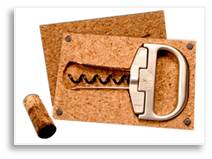Here in New England, spring is also mud season. The snow melts slowly and messily, revealing
all the winter’s sad and flattened trash.
Branches are still bare, bulbs are just gathering their courage, and the
air turns cold with the flick of a cloud across the sun.
For movie fans, spring is not a time of growth or renewal. It is not a season of optimism and
anticipation. Spring is Mudville without
the joy.
Spring and fall are when the distribution companies dump a lot of the
films that weren’t suitable for the Christmas holidays, good enough to be
Academy Awards contenders, or likely to sell much summertime popcorn. With the exception of animated films for
kids, which always do very well, spring is when the movie schedule looks like
an old snow bank—ugly and grainy and rimed with dirt. We look at what was released this week, check
the reviews, shake our heads, and turn on the TV or pick up a book.
Some of these movies will make money.
We all know what P.T. Barnum said about underestimating the taste of the American
public. This weekend is no exception and
I will be munching no popcorn tonight. Just look at the current dismal Cineplex
selection with their Tomatometer scores.
In alphabetical order (and not counting The Croods):
- Admission: (42% rotten / 113 reviews) – Although we saw it and enjoyed it.
- The Call: (40% rotten / 86 reviews)
- G.I. Joe: Retaliation: (30% Rotten / 126 reviews)
- The Host: (13% rotten / 72 reviews)
- The Incredible Burt Wonderstone: (38% rotten / 167 reviews)
- Identity Thief: (21% rotten / 143 reviews)
- Olympus Has Fallen: (48% rotten / 126 reviews)
- Oz the Great and Powerful (61% fresh / 222 reviews) This score has improved since the film’s release
- Spring Breakers: (68% fresh / 114 reviews)
- Temptation: (0%) -- Tyler Perry does not do advance showings for reviewers. 80% of viewers liked it, though.
Th. . . . th. . . th. . .that’s all, folks. Well, not quite. Some interesting movies were released and
some were even reviewed well but you won’t find those at the Cineplex. No, sir.
Although many of them have A-list stars, they got stuck in the dreaded swamp
of Limited Distribution. For better or
worse, you will look in vain for:
- Blancanieves
- Emperor
- Everybody Has a Plan
- Gimme the Loot
- The Place Beyond the Pines
- Renoir
- Room 237
- The Sapphires
Unless you live in New York City or Los Angeles, you will have to wait
a week for most of these to show up. And
even then, unless you want to haul your butt to the cracked and broken seats of your
nearest “art house” (assuming there is one), you will have to wait for these to
appear on DVD or the TV.
So the snowdrift melts slowly, the flowers push upwards, and we
wait. Good stuff is coming, we know
that, but is anticipation enough for us movie fans?
Commander Spock once said, “The wanting is
often better than the having. It is not
logical, but it is often so.” When it
comes to the movies, I prefer the having.
Wanting doesn’t sell many tickets, or a whole lot of popcorn, either.







